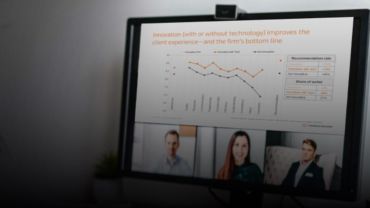Lawyers, like other professionals, work with a staggering amount of data; and the key to business success is being more data-driven in your decision-making
Lawyers work with a lot of data; however, much of that data is not currently exploited to help support legal professionals’ legal decisions, client advice, or business strategies such as pricing.
Other industries — particularly those with consumer-facing offerings — have long leveraged large data sets to enhance decision-making. Predictions based on data are built into many familiar offerings such as traffic apps, e-commerce, and medicine.
The data that lawyers have available for decision support is significant, but fragmented and diffuse. Some important data comes from government sources — court data, legislation, regulations, etc. Other data is internal to legal organizations — billing data, and data about matters and outcomes. But because the use of data hasn’t been widely incorporated into legal workflows, lawyers often make decisions with a heavy reliance on personal experience and their own specific expertise.
Today, however, that is beginning to change; and data is increasingly being leveraged to support legal decision-making, particularly in three areas:
-
-
- Litigation Planning and Strategy — Using data from court dockets to predict the likelihood of success on a motion or a judge’s tendency to rule on a specific type of matter, for example.
- Document Review — Using predictive coding in eDiscovery tools to determine the relevance of a given document to a legal issue, for example.
- Pricing and Budgeting — Using data from past billings and matter management systems to predict the cost of a matter and provide a fixed fee to the client.
-
Becoming a data-driven legal practice is not just a matter of harnessing data with the right software. It requires a significant change in mindset and a willingness to change workflows and processes. All of those require fundamental changes in an organization’s culture as well as the mindset of the people operating in that organization.
A new Thomson Reuters white paper, titled, “The Legal Professional’s Competitive Survival Guide: How Data Can Make Lawyers More Efficient, Competitive, and Predictive” looks at some of those changes that will be required of successful law firms and in-house legal departments as they begin to better leverage data in their operations. Also, the white paper includes a list of five steps to becoming a data-driven practice:
-
-
- Walk before you run and start with the low-hanging fruit — The place to start with using data to enhance your practice is probably in comparatively mundane applications
like billing and matter-management systems. They hold a gold mine of data about productivity, value, talent, results, and outcomes. That data can be used to support decisions about staffing, pricing, and managing capacity. - Identify and organize your data — Simply understanding what data you have is an important first step. This might also involve getting data structured in the right way: getting it out of disparate and unwieldy spreadsheets that law firms maintain for data-collection processes, for example, and into an organized and structured format that is both secure and shareable among those with the appropriate access permissions.
- Clean up your data — Data hygiene is a critical step. Many systems that support billing and matter management data, for example, weren’t designed with the large-scale extraction and analysis of that data in mind. Imposing that kind of data hygiene is hard work which involves relying on people with good data skills working side-by-side with the legal professionals who understand the significance of the data.
- Collaborate with those who know data well — Leveraging analytics in a legal organization requires lawyers to work in collaboration with people who understand data and data structures. For both lawyers and data professionals, crossing that divide and building trust and subject-matter expertise across professional boundaries is a big part of the mindset shift that the legal industry is facing today.
- Build a data-driven culture in your organization — Building a data-driven legal practice is not something you assign to a task force, department, or an individual. It’s one of these change-management challenges that requires buy-in from everyone: from leadership that is prepared to invest in it; to the professionals tasked with building applications; to the workflow owners who have the tough task of altering the way work gets done; and to the practitioners who have to trust the data and build data-driven predictions into the advice they give the firm’s clients.
- Walk before you run and start with the low-hanging fruit — The place to start with using data to enhance your practice is probably in comparatively mundane applications
-
You can download a free copy of the white paper, “The Legal Professional’s Competitive Survival Guide: How Data Can Make Lawyers More Efficient, Competitive, and Predictive” here.
This white paper is part of a series of Thomson Reuters white papers and other resources concerning artificial intelligence in the legal industry and data-centric legal practice.







